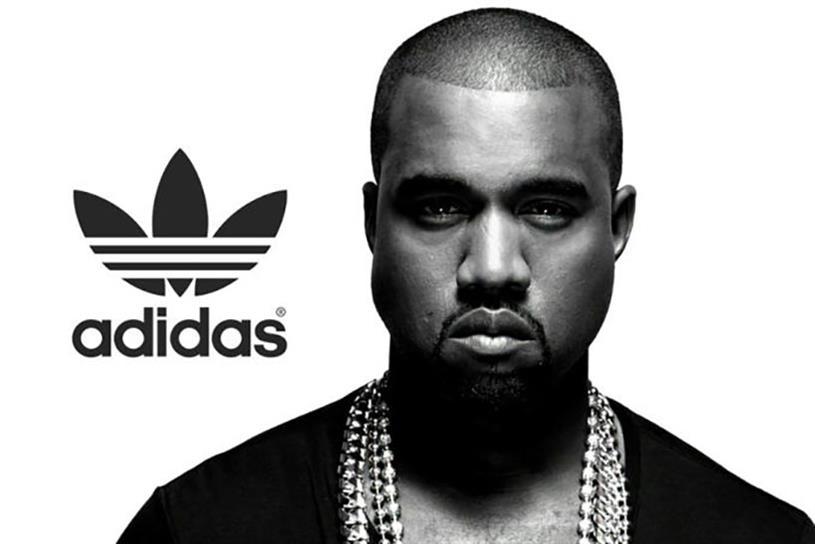Campaign US: The Athleticism of Fashion
02.26.2016

*This article was originally posted By CAMPAIGN US.
By Michael Sussman
February 26, 2016
---
Gender stereotypes in sports and fashion are beginning to disappear, creating new partnership opportunities for sportswear and high-fashion brands.
During last week’s Fashion Week in New York, Kanye West showed his third collection with Adidas at Madison Square Garden. Sportswear icon Fila partnered with CFDA/Vogue Fashion Fund finalist Baja East, whose show this year prominently featured sweatshirts and casual tanks. And Nike is working with Givenchy’s Riccardo Tisci. These are the latest in a flurry of fashion collaborations with some of the world’s leading sportswear brands, and the athleisure trend shows no signs of abating.
Why are sportswear giants embracing fashion now? Our research shows that on average, sportswear brands have 30% higher "relevance" and 55% higher "regard" than high fashion brands among US consumers. Sportswear brands have usually relied on celebrity endorsements to stay relevant among younger consumers, so what do they stand to gain from creative collaborations with designers?
Mass retailers have engaged in these kinds of partnerships for years, with some considerable success. After Uniqlo launched its collaboration with Jil Sander in 2009, preference for the Uniqlo brand increased 3 times among Millennials. Since its early collaboration with Isaac Mizrahi in 2002, Target has gone on to partner with other high-end brands like Phillip Lim, who launched a collection there last year. Target consumers benefitted from these partnerships because they could buy designer creations on a budget, while the Target brand benefitted by gaining access to a new market.
Yet partnership dynamics for sportswear brands are fundamentally different. Unlike Target or even Uniqlo, which benefit from an exposure to fashion-forward consumers, sportswear brands like Nike and Adidas already have high advocacy across the board. Based on our survey research, which measures 48 imagery attributes, men and women rank Nike and Adidas in the top 10% on "authentic" and "high performance." For sportswear brands, the real goal is to shift consumers’ functional relationships with their products. They are not only trying to tap into a new audience, they are trying to capitalize on the athleisure movement, convincing their existing customers to start wearing sweatpants and running shoes to work.
The research indicates fashion collaborations can actually anchor a sportswear brand’s mission and purpose in the marketplace. These partnerships go beyond the traditional Michael Jordan or David Beckham endorsement deal, they tap into a fundamental change in the way consumers interact with brands.
Since 2008, Adidas has joined forces with diverse designers like Yohji Yamamoto (Y-3), Stella McCartney (Adidas by Stella McCartney), Raf Simmons (Adidas x Raf Simmons), and Kanye West (Yeezy). During this time, millennial perceptions of "authenticity" have increased for the Adidas brand at a rate of 3%each year. Millennials now rank Adidas as more "stylish" than 96% of the brands in our survey, putting it in the same league as brands like Prada and Louis Vuitton. Diverse fashion collaborators have, paradoxically, clarified the brand’s core meaning.
The success of these partnerships depended, in part, on their cross-gender appeal. Adidas was able to build design credibility without losing its reputation for high performance activewear. It built separate stores to house its Y-3 collection and sold Yeezy at high-end retailers like Barneys, but the overall aesthetic remained the same. By marketing to consumers based on their shared interest in wellness, rather than gender stereotypes, Adidas has seen long-term benefits.
This season, many brands have followed suit: French label APC made its New York Fashion Week debut, showcasing its collaboration with sportswear brand Outdoor Voices. And Puma unveiled the highly anticipated Fenty shoe, its first creative collaboration with Rihanna. This was a smart move for Puma, which currently struggles with 20% lower preference among millennials than it has with adults.
Although Nike president Trevor Edwards recently attributed his company’s fashion focus to the growth of its women’s business, our research shows that the convergence of sports and fashion strongly appeals to both genders. In fact, the recent athleticism of fashion has been a joint-effort.
Women have become more involved in sports culture, while men have become more invested in fashion. In fact, 51% of the self-identified "brand conscious" consumers in our survey were men. Social media influencers are increasingly drawn to unisex sportswear brands like Fear of God, and Off White. As young men wait months for the latest Riccardo Tisci-designed Nikes or spend thousands on the newest Yeezy shoes, advertisers must acknowledge that the balance has shifted.
By marketing to consumers based on their shared interest in wellness, rather than gender stereotypes, brands have the unique ability to solidify their brand positioning and simultaneously deepen their relationship with consumers.
Michael Sussman is global president of BAV Worldwide and heads BAVLAB Worldwide, a brand consultancy within Young & Rubicam.
